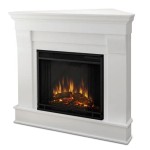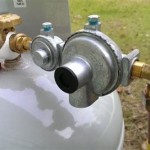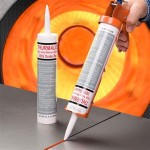Mesh Fireplace Curtains: A Comprehensive Guide
Mesh fireplace curtains, also known as fireplace screens, are essential safety features and decorative elements for homes with functioning fireplaces. These curtains provide a crucial barrier, preventing sparks and embers from escaping the firebox and potentially causing damage or injury. Beyond safety, mesh curtains contribute to the aesthetic appeal of the fireplace and the room it occupies. This article explores the various aspects of mesh fireplace curtains, including their functionality, types, materials, selection criteria, maintenance, and installation.
Functionality and Safety
The primary function of a mesh fireplace curtain is to contain the fire within the designated area. Open fireplaces, while aesthetically pleasing, pose a significant risk. Burning wood often releases sparks and small embers that can pop out of the firebox and land on flammable materials, such as carpets, rugs, or furniture. These sparks can quickly ignite, leading to a house fire. A properly installed mesh curtain acts as a physical barrier, trapping these sparks and preventing them from escaping. The tightly woven mesh allows heat to radiate into the room while effectively blocking larger particles.
The safety benefit of a mesh curtain extends beyond preventing fires. It also protects children and pets from accidentally touching the hot surface of the firebox or coming into direct contact with the flames. The curtain provides a visual and physical deterrent, making it more difficult for them to access the fire. For homes with young children or pets, a fireplace screen is a fundamental safety precaution.
Furthermore, a mesh curtain can help moderate the airflow through the fireplace. By partially controlling the draft, it can contribute to a more consistent and controlled burn. This can improve the efficiency of the fireplace and reduce the amount of smoke released into the room. Some mesh curtains are designed with adjustable features that allow for fine-tuning of the airflow based on the specific needs of the fireplace and the type of wood being burned.
Types of Mesh Fireplace Curtains
Mesh fireplace curtains are available in several different styles and configurations, each offering unique advantages and disadvantages. Understanding these variations is crucial for selecting the appropriate curtain for a specific fireplace.
Standard Mesh Curtains: These are the most common type of fireplace screen. They consist of two mesh panels that hang from a rod installed across the front of the fireplace opening. The panels can be easily opened and closed using pull chains or handles, allowing access to the firebox for adding wood or tending to the fire. Standard mesh curtains are typically made of steel or iron and are available in a variety of finishes to match different décor styles. They are relatively inexpensive and easy to install, making them a popular choice for many homeowners.
Freestanding Fireplace Screens: These screens are self-supporting and do not require installation on the fireplace itself. They typically consist of a decorative frame with a mesh panel or panels attached. Freestanding screens can be placed in front of the fireplace opening and moved as needed. They are a good option for fireplaces that are not regularly used or for homeowners who prefer not to install a permanent screen. Freestanding screens are available in a wide range of styles and designs, from simple and functional to ornate and decorative.
Bi-Fold Fireplace Screens: These screens consist of two panels that are hinged together, allowing them to fold inward for easy access to the firebox. Bi-fold screens are often more decorative than standard mesh curtains and can add a touch of elegance to the fireplace. They are typically made of heavier materials and are more durable than standard mesh curtains. However, they can be more expensive and may require professional installation.
Tri-Fold Fireplace Screens: Similar to bi-fold screens, tri-fold screens consist of three panels that are hinged together. This design provides greater stability and allows the screen to stand freely in front of the fireplace. Tri-fold screens are often more decorative than standard mesh curtains and can be a focal point in the room. They are typically made of heavier materials and are more durable than standard mesh curtains, but they also tend to be more expensive.
Spark Guards: These are simple, single-panel screens designed primarily to prevent sparks from escaping the fireplace. They are typically made of lightweight mesh and are not as decorative as other types of fireplace screens. Spark guards are a good option for fireplaces that are used infrequently or for homeowners who prioritize function over aesthetics.
Materials and Construction
The materials used to construct a mesh fireplace curtain significantly impact its durability, appearance, and performance. Common materials include steel, iron, brass, and stainless steel. Each material offers distinct advantages and disadvantages.
Steel: Steel is a strong and durable material that is commonly used for fireplace screens. It is relatively inexpensive and can be easily formed into various shapes and designs. Steel screens are typically coated with a heat-resistant paint or powder coating to protect them from rust and corrosion. The finish can be matte, glossy, or textured to match the décor of the room.
Iron: Iron is another strong and durable material that is often used for fireplace screens. It is heavier than steel and has a more rustic appearance. Iron screens are typically more expensive than steel screens but are also more resistant to damage. They are often coated with a protective finish to prevent rust. Cast iron screens offer intricate designs and durability, a popular choice for traditional homes.
Brass: Brass is a decorative metal that is often used for accents on fireplace screens. It is a relatively soft metal and is not as durable as steel or iron. Brass screens are typically used in more formal settings and can add a touch of elegance to the fireplace. Brass requires regular polishing to maintain its shine.
Stainless Steel: Stainless steel is a corrosion-resistant material that is ideal for fireplaces in humid environments. It is more expensive than steel or iron but is also more durable and requires less maintenance. Stainless steel screens have a modern and sleek appearance.
The construction of the mesh itself is also critical. The mesh should be tightly woven to prevent sparks and embers from passing through. The gauge of the wire used to create the mesh should be thick enough to withstand the heat and pressure of the fire. Welded joints and reinforced edges can enhance the durability of the screen and prevent it from unraveling.
Selection Criteria and Considerations
Choosing the right mesh fireplace curtain requires careful consideration of several factors, including the size of the fireplace opening, the style of the room, the budget, and the desired level of safety and functionality.
Size: The most crucial factor is the size of the fireplace opening. The screen must be large enough to completely cover the opening and prevent sparks from escaping. Measure the width and height of the firebox opening and select a screen that is slightly larger than these dimensions. Overlapping the opening by a few inches on each side provides an extra margin of safety.
Style: The style of the fireplace screen should complement the overall décor of the room. Choose a screen that matches the architectural style of the house and the existing furniture and accessories. Consider the finish of the screen and select a color that coordinates with the other elements in the room. Traditional homes might benefit from ornate iron screens while modern homes might opt for sleek stainless steel.
Safety: Safety is the most important consideration when selecting a fireplace screen. Choose a screen that is made of durable materials and has a tightly woven mesh. Ensure that the screen is properly installed and securely attached to the fireplace. Look for screens that meet safety standards and have been tested for fire resistance. Consider screens with features like fine mesh and secure closures for enhanced protection.
Functionality: Consider how the fireplace will be used and select a screen that meets those needs. If the fireplace is used frequently, choose a screen that is easy to open and close. If the fireplace is primarily decorative, choose a screen that is aesthetically pleasing. Some screens have features such as adjustable airflow or built-in tool holders, which can be useful for frequent users.
Budget: Fireplace screens are available in a wide range of prices. Set a budget before shopping and stick to it. Consider the long-term cost of the screen, including maintenance and replacement. Investing in a high-quality screen that is durable and long-lasting can save money in the long run.
Installation and Maintenance
Proper installation of a mesh fireplace curtain is essential for ensuring its safety and effectiveness. The installation process varies depending on the type of screen.
Standard Mesh Curtains: Installation typically involves attaching a rod across the top of the fireplace opening. The curtain panels then hang from the rod. Ensure the rod is securely mounted and that the curtains move freely along the rod. Check regularly for any signs of wear or damage to the rod or curtains.
Freestanding Screens: Freestanding screens do not require any installation. Simply place the screen in front of the fireplace opening. Ensure the screen is stable and does not pose a tripping hazard.
Maintenance: Regular maintenance is necessary to keep the fireplace screen in good condition. Clean the screen regularly to remove soot and ash. Use a soft brush or cloth to wipe down the mesh. Avoid using harsh chemicals or abrasive cleaners, which can damage the finish. Inspect the screen regularly for any signs of damage, such as rust, cracks, or loose mesh. Repair or replace the screen as needed.
For metal screens, applying a heat-resistant paint or sealant can help protect them from rust and corrosion. Regularly check the connections and hinges to ensure they are secure and functioning properly. Addressing minor issues promptly can prevent them from escalating into more significant problems.

1 4 Standard Mesh With Top Valance Up To 84 Wide Recessed

Factory Supply Stainless Steel Link Mesh Metal Fireplace Screen Curtain China With Black Made In Com

Matte Black Recessed Fireplace Screen With Valance For Masonry Fireplaces

Custom Screens

Mesh Curtain Sets Stainless Steel 1 4 Weave For Openings 30 To 40 Wide

Custom Fabricated Mesh Curtain Fireplace Screen

Spark Fireplace Mesh Screens Hightop

Solid Satin Copper Steel Fender With Mesh Curtain Of Choice

Custom Fabricated Mesh Curtain Fireplace Screen Screens Hanging

Fireplace Mesh Screens By Condar








